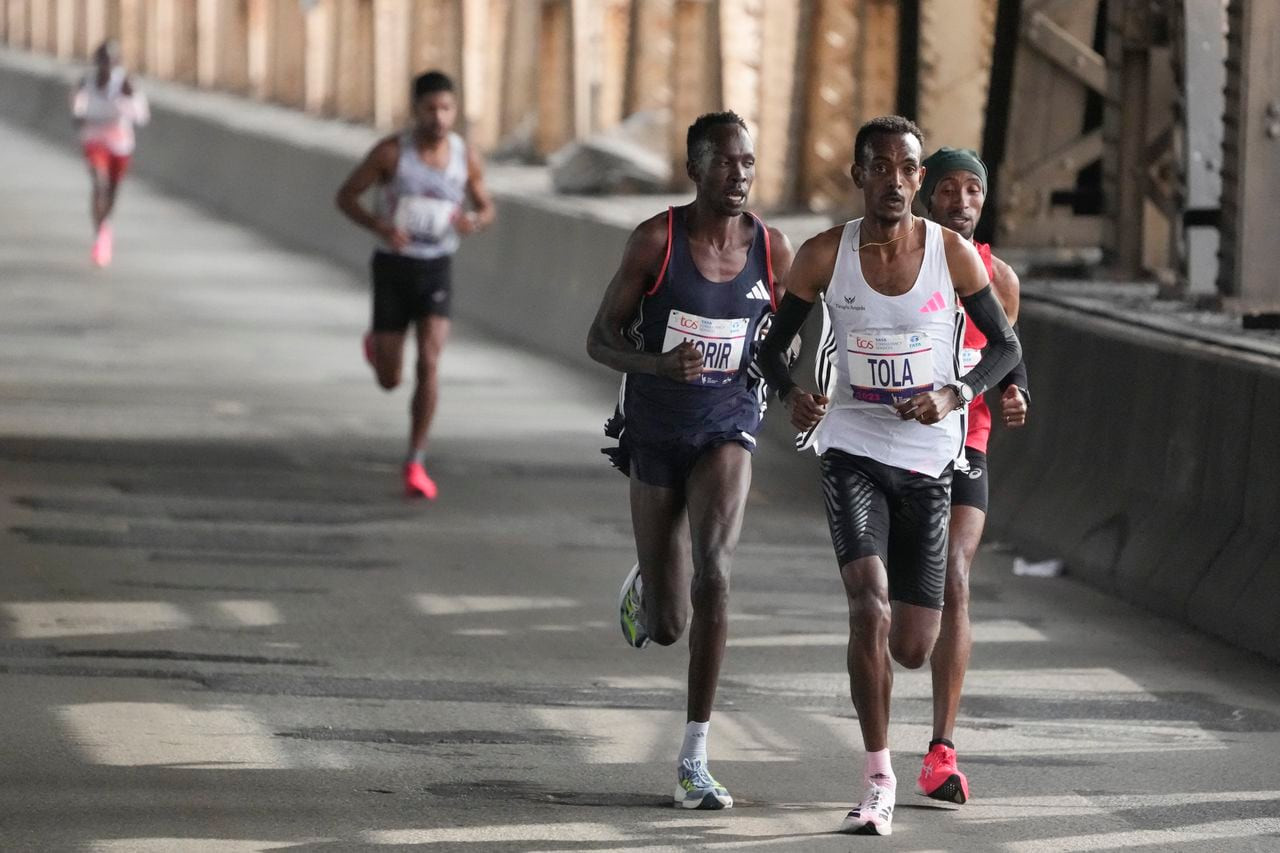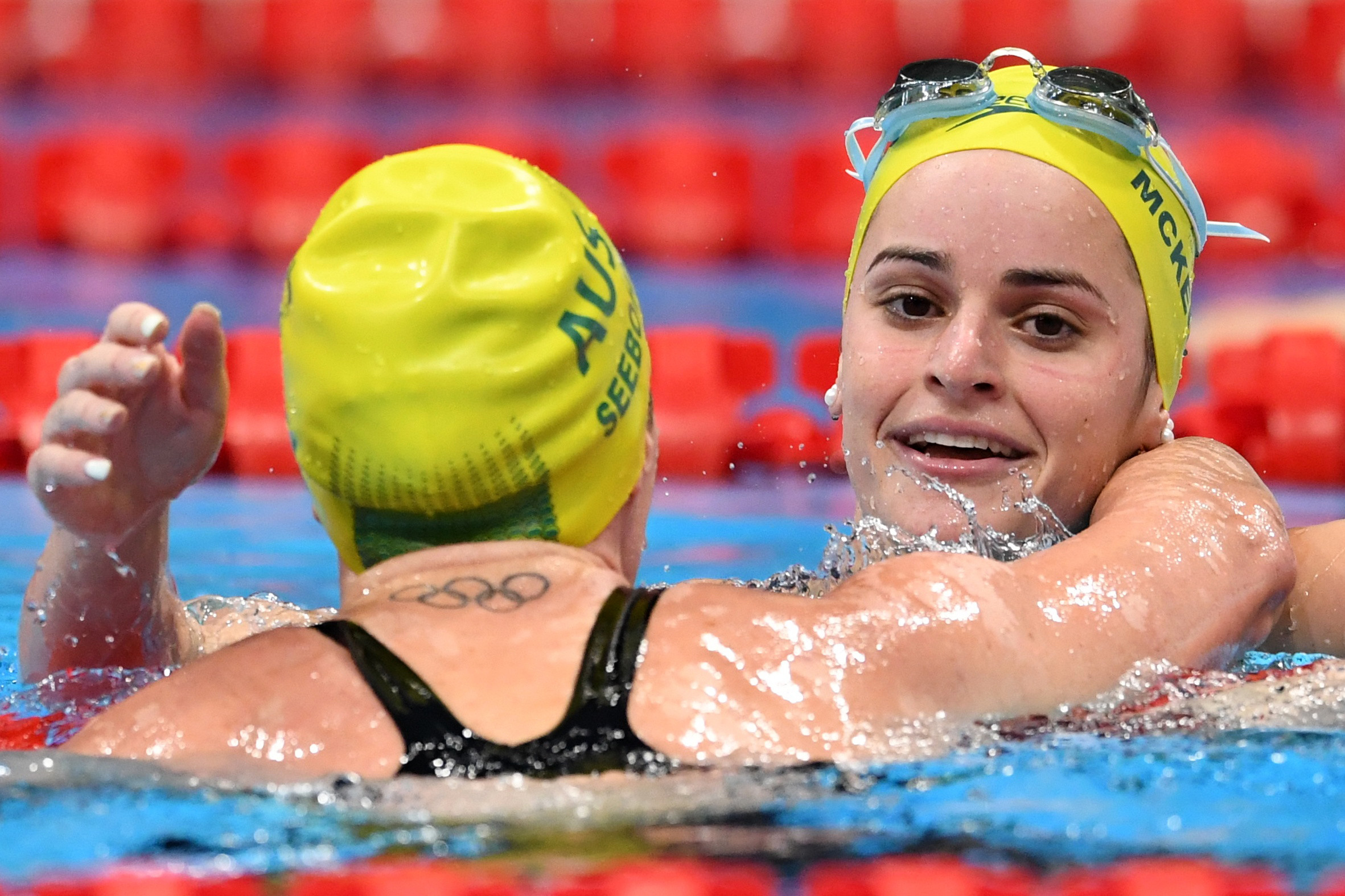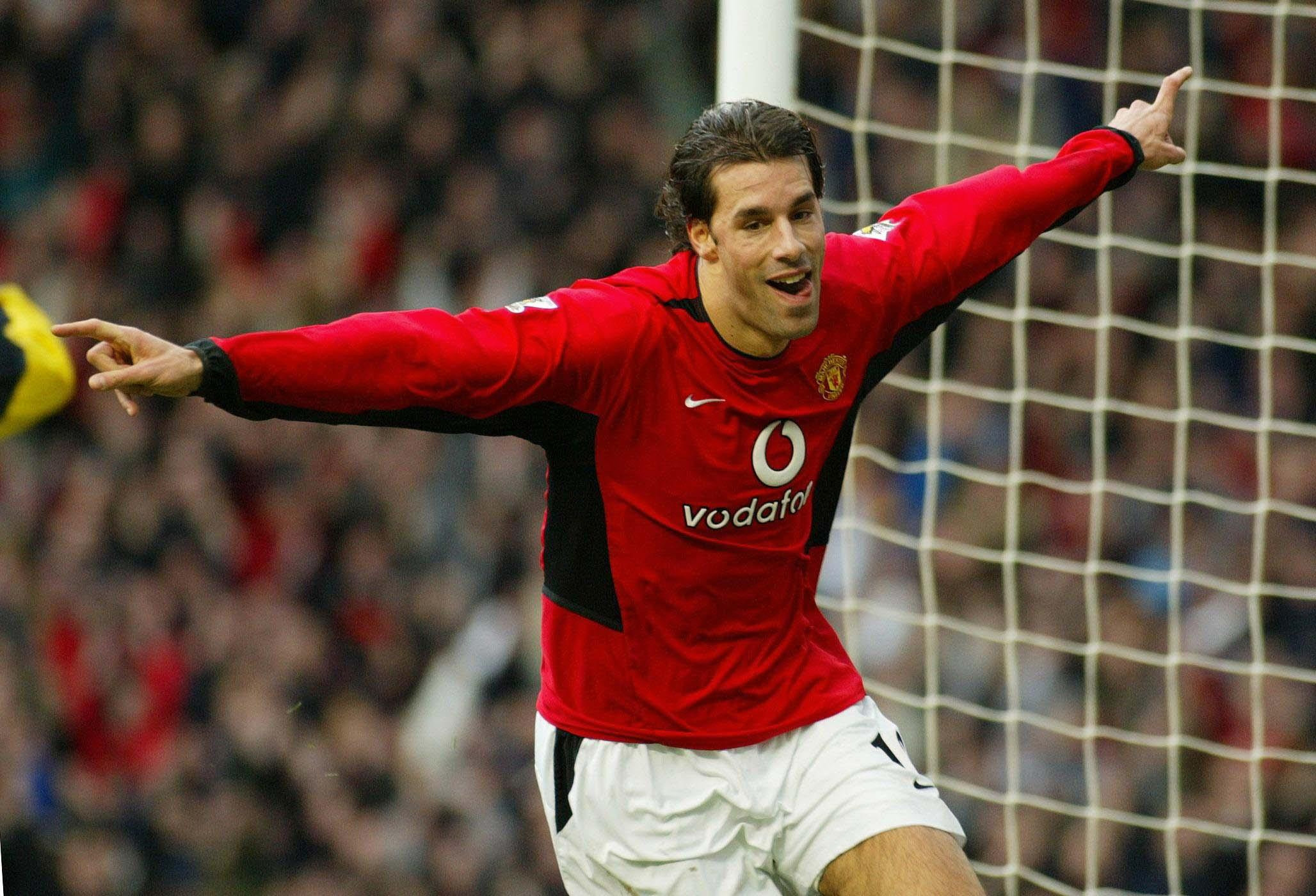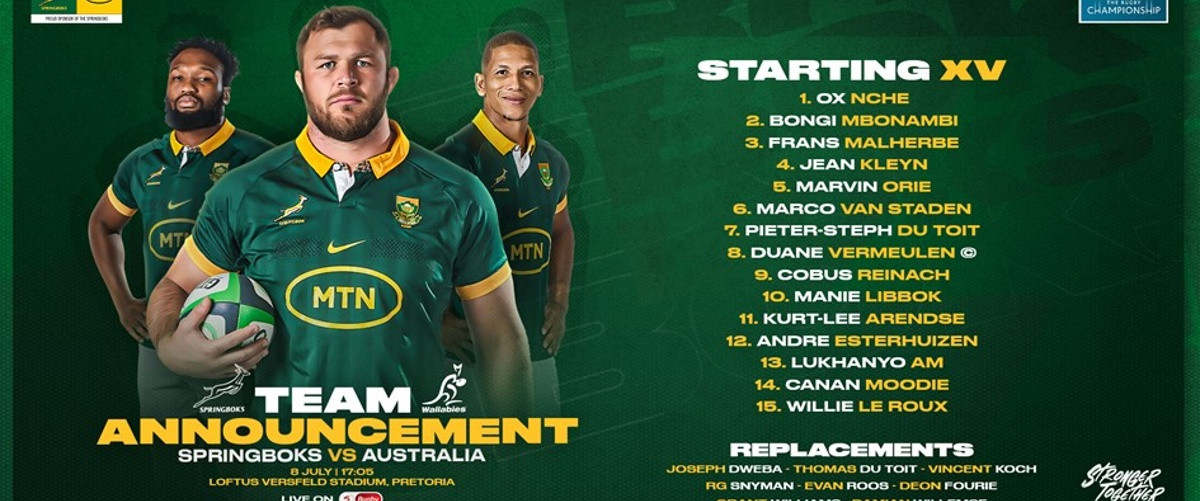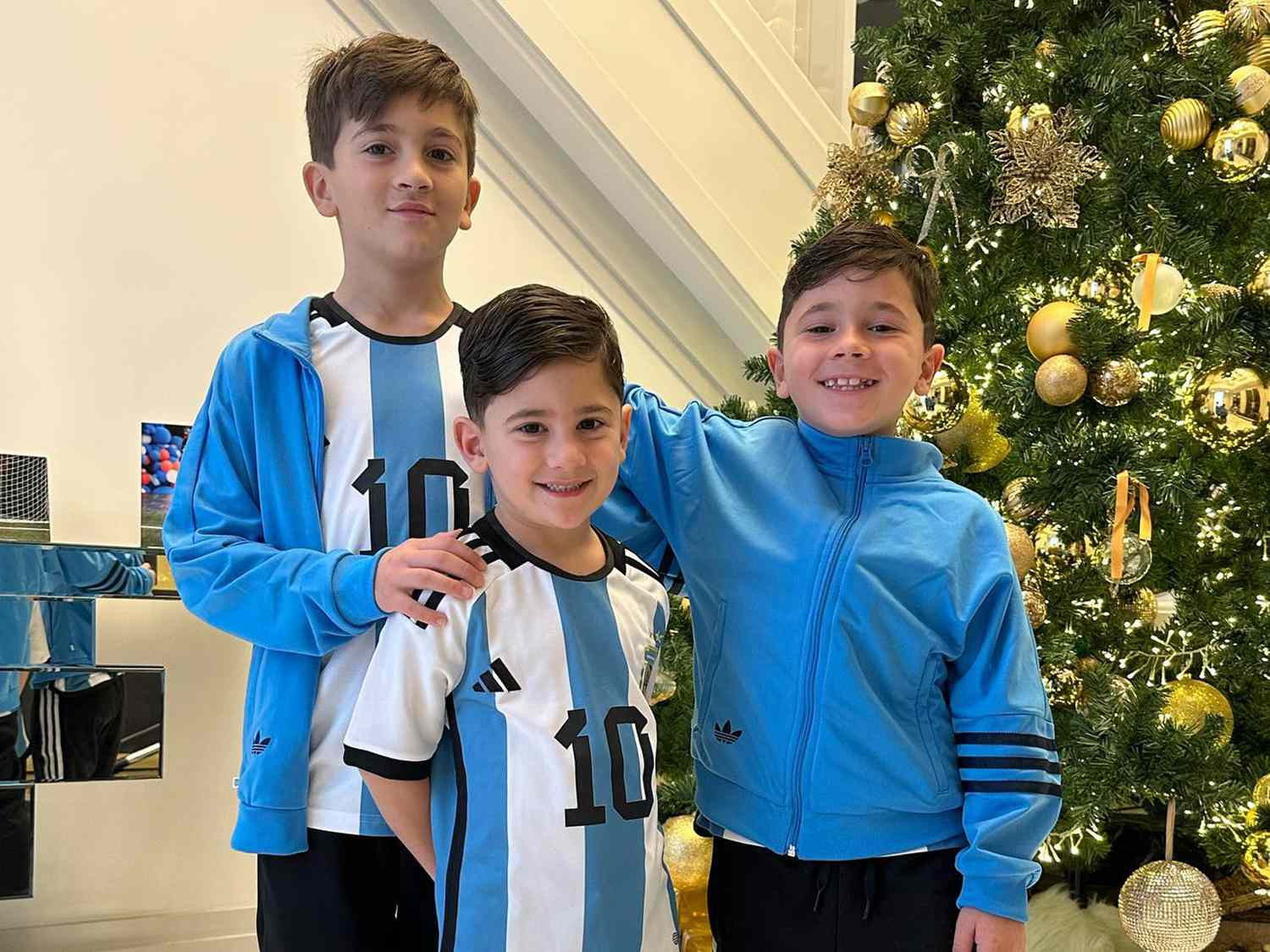On a crisp, beautiful Sunday morning, more than 50,000 runners from over 150 countries turned out for the TCS New York City marathon. The professional men's division got underway shortly after 9:00 a.m. with defending New York City Marathon champion Tamirat Tola from Ethiopia trying to become the first man to repeat as champion in New York since Geoffrey Mutai of Kenya won in 2011 and 2013. The 2012 race was canceled because of Superstorm Sandy.
Tola has more history on the line: He is looking to join select company by becoming only the second runner to win both an Olympic gold and the NYC marathon in the same year, equaling the feat accomplished by Peres Jepchirchir of Kenya in 2021.
Jepchirchir is the first runner to win the Olympic, New York and Boston marathons over a career.
Tola is coming off a win at the Paris Games, where he set an Olympic record in the marathon. He said the Paris and New York race courses were similar because of the hills.
To defend his title on his favorite course, he'll have to beat a stellar field that includes past winners Geoffrey Kamworor (2017, 2019), Albert Korir (2021) and Evans Chebet (2022), who all are from Kenya.
Bashir Abdi of Belgium won the silver medal in Paris and also is in the race. Conner Mantz and Clayton Young, who finished eighth and ninth in Paris, are the top American men.
Sheila Chepkirui won the professional women's race in a time of 2:24:35, finishing seconds ahead of defending champ Hellen Obiri.
Obiri, a 34-year-old from Kenya who won the bronze medal at the Paris Olympics, was trying to become the first woman to win consecutive races since Mary Keitany of Kenya won three in a row from 2014-16.
Wheelchair Races
Daniel Romanchuk of the U.S. won the men's wheelchair race, finishing ahead of David Weir and Tomoki Suzuki. Romanchuk finished in a time of 1:36:31.
Marcel Hug of Switzerland was trying to win the race for the four consecutive year and seventh time overall. Hug had battled a cold before the race and fell behind in the second half.
The Swiss star, nicknamed the Silver Bullet, had won 16 straight marathons, including a gold medal at this year's Paris Paralympics. He also won the Chicago Marathon a few weeks ago. The 38-year-old Hug was in the lead pack Sunday heading into Manhattan before falling off the pace. Romanchuk said a pothole on First Ave. caused some issues for some of the competitors.
It then became a three-man race between Romanchuk, David Weir and Tomoki Suzuki. The trio came into the last mile within a second of each other before Romanchuk, who also won this race in 2018 and 2019, pulled away to win in 1 hour, 36 minutes, 31 seconds.
"I know most of the other racers pretty well, really just try and completely empty the tank for the final mile," Romanchuk said. "It's amazing."
Weir, who was runner up in 2021 as well as winning the title in 2010, finished 5 seconds behind. Suzuki was third at 1:36.43. Hug finished fourth, 3:38 behind the winner.
Susannah Scaroni of the U.S., who won the race in 2022, opened a huge lead in the opening miles and never looked back. Her final time was 1:48:05, which was minutes ahead of her nearest competitor.
Scaroni beat another American, Tatyana McFadden, winning the race by more than 10 minutes in 1:48.05.
"Always so special to be here in New York City," Scaroni said. "I woke up feeling great today, never take it for granted. Coming up the last hill we had a tailwind today. So I had a little more energy then I normally do at that hill."
Scaroni set a course record when she won in 2022 and finished third a year ago. It's the first time in the history of the race that both the men's and women's wheelchair events were won by Americans.
Race History and Logistics
The NYC marathon has been held since 1970 and had more than 50,000 runners finish the race last year. The race is organized by the nonprofit New York Road Runners. Runners can get into the marathon a variety of ways, including a qualifying time, a lottery or charitable contributions.
For the first time, the organization added a "Team for Climate" that allowed runners to donate $3,000 for carbon credits to get entry into the race. While it's been warm all week in New York, with temperatures in the 70s and 80s Fahrenheit (20s Celsius), race day is supposed to see it cool down to the 50s.
Trying to improve the experience for runners after the 26.2-mile race, New York Road Runners worked with the city and arts organizations to provide deals on some museum entries and tickets to Broadway shows.
Thousands line the TCS New York City Marathon course that runs 26.2 miles through the five boroughs of the city. The race begins on Staten Island. Runners cross the Verrazzano-Narrows Bridge into Brooklyn and Queens before crossing into Manhattan.
Runners head next to the Bronx, and then back into Manhattan to the finish line in Central Park. You can find a mile-by-mile tour of the course here.
The TCS New York City Marathon course is closed to vehicular traffic during the race. Start times are subject to change, but this is the scheduled timeline:
- 8:00 a.m. Professional Wheelchair Division
- 8:22 a.m. Handcycle Category and Select Athletes with Disabilities
- 8:35 a.m. Professional Women's Open Division
- 9:05 a.m. Professional Men's Open Division
- 9:10 a.m. Wave 1
- 9:45 a.m. Wave 2
- 10:20 a.m. Wave 3
- 10:55 a.m. Wave 4
- 11:30 a.m. Wave 5
The Crowd Effect: An Inside Look
It claims to be the largest marathon in the world, and yet, it cannot accommodate all the interest. Roughly 4 percent of people who entered a raffle to run the 2024 New York City Marathon will get the chance on Sunday to wind through five boroughs and over five bridges all the way to Central Park. The rejection email sent out in March to many tens of thousands of marathon hopefuls featured a photo at the top of a runner in an orange singlet that read “Nick” cheerfully flashing finger guns at the camera—finger guns he “used to shoot down our hopes and dreams,” as one woman put it. “I’m the most hated person in running,” Nick Parisi, the unwitting man in the photo, told NBC New York. Ironically, Parisi himself didn’t initially get into the marathon either. The CEO of New York Road Runners, which puts on the marathon every year, had to do damage control for the situation, presenting Parisi with guaranteed entry and a custom race bib.
So, spots in the NYC Marathon are coveted. But let me tell you what running that race is really like, as someone who enjoys marathons enough to have completed three, plus a “virtual marathon” in fall 2020, and an ultramarathon that was 32 miles long. To run the New York City Marathon is to be tracked by your friends and loved ones (and, possibly, enemies?) on an app, while you are screamed at for three to six hours straight. The course, famously, has basically no breaks from the crowds of spectators—the bridges are the only stretches that are quiet. And wow, by the end of it, did I wish everyone watching would just shut up.
I don’t hate spectatorship, per se. In fact, one of the great joys in this life is getting the chance to literally cheer someone on, or to be cheered on yourself. When I ran that “virtual marathon”—a marathon where you pay money for a medal but just run the distance on your own—I was so worried about how I’d fare without encouragement and general camaraderie that I wrote mantras on notecards ahead of the race. Each time I completed a mile, I’d pull a card out of the stack, which I kept in a pocket on my hydration pack. I drew inspiration from the signs that I’d seen people hold up at previous marathons I’d run in Toronto and Miami: You got this, You’re amazing, that kind of energy. Undiluted praise and faith—it’s powerful.
Sometimes, spectators hand you fun snacks: I will never forget the mini pretzels one person was offering runners somewhere around Mile 22 of my first marathon. I was so sick of the sugary gel packets that are staples at these events and yet needed food so badly that I didn’t think twice about sticking my hand directly into a tub that was probably, by that point, 3 percent sweat by volume. When I ran the NYC Marathon a couple years ago, a stranger in Queens gave me a small can of Coke, a boost I badly needed. The fact that someone came out to watch with a six-pack of soda to offer runners: That’s race magic.
In this city, though, watching the marathon seems to be even more of a sport than running it. Many people have annual plans to get together with friends and post up at a specific spot. For the past six years, I’ve lived on the course itself, and have even loved getting to watch runners go by with my neighbors. In the lead up to my marathon race day, when loose acquaintances identified me as someone who was running the marathon, they got excited. “I’ll track you!,” said one, pulling out the app on her phone, where you can type in the name of anyone running and watch their little dot move along the course in real time. At first, I felt like a celebrity, and it was fun. Then, I felt like a celebrity, and it was bad. After I finished the race, I learned that family members had also tracked me. Yes, it was very sweet to get a text from someone I love right after I crossed the finish line. But knowing people—anyone, actually!—could have been watching me the whole time? No thanks. After the race, my boss reported that she’d seen me pass by on the Upper East Side, while at the annual marathon watching party she attends. I was walking at that point! I don’t want people I know to see me walking!
As I ran the almost-final stretch of the race down through Central Park, I felt a sensation of the crowds, which were on either side of the path, starting to close in. I hadn’t had a good run that day, and the cheering felt like it was mocking me, more than anything. For over 20 miles, I’d seen the same iterations of jokes on signs—about runners being crazy, and bodily functions, and “Run like Brad Pitt is at the finish line!”—over and over and over. Some people held giant, blown-up faces of their loved ones who were running, which is cute the first few times you see it and then the faces are, well, giant faces staring at you in your delirium. I run to get away from it all. This experience was the opposite of that.
You might correctly point out that hardly anyone was really paying attention to me, and those that were were only doing so fleetingly. But the sensation of being at the very center of all the commotion and attention, and feeling the pressure to perform well, was still there for me. Again, the attention directed at the runners never lets up. The cheering isn’t a break from any other state of being. It’s all cheering. I am a person who generally thinks of himself as liking attention. But participating in this race was like getting caught with a cigarette, and then being told I had to smoke the whole pack.
A Different Kind of Marathon Experience
There are plenty of races that aren’t like this. In fact, I’d estimate that almost all of them aren’t like this. One of my favorite races is the United Airlines NYC half marathon, which happens every March. It draws fun crowds in a few spots, including as you run through Times Square toward the end of the course, but it also includes a blissful, quiet stretch on FDR Drive, which is free of cars for the morning. And then, there are the races like the next race that I did after that NYC Marathon. That one was outside of Tampa, Florida, in the woods. It had fewer than 100 participants. We started before dawn, wearing headlamps. I brought my headphones, but I didn’t end up playing any music. I talked a little bit with other runners, and overheard snippets of chatter from volunteers, and stopped to take pictures of plants a couple times. I ate gummy bears and peanut butter sandwiches from my backpack, and listened to my breath. I spent nearly seven hours running that course, just existing. Which is to say: If you were rejected from running the NYC Marathon, maybe you’ve found a race to run instead that you’ll like better.
The New York City Marathon is a feat. I am in awe of the people who shut down the roads and set up the infrastructure and generally coordinate this giant, hulking athletic event. It’s been going on for over 50 years, with many runners having participated upwards of a dozen times. May everyone who really wants to experience it get the opportunity to. And if you are out there running this year, I’ll be on the sidelines, rooting for you—and yelling.




